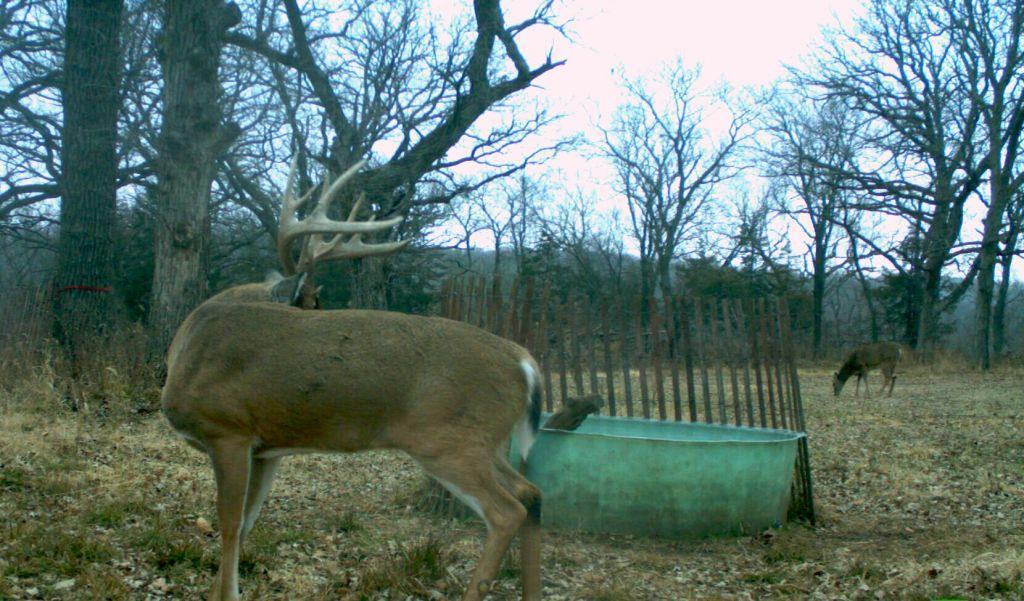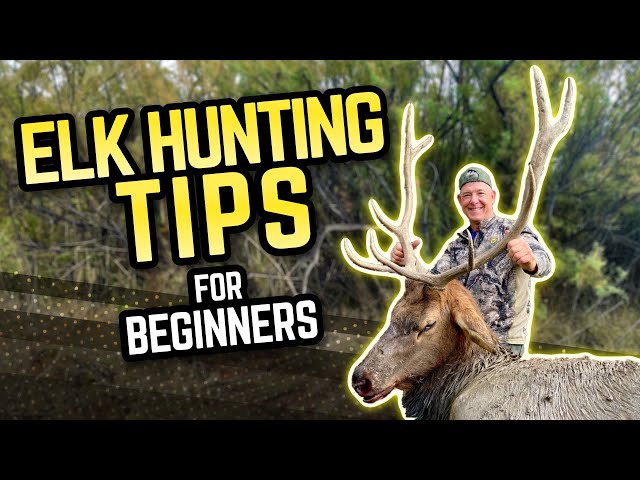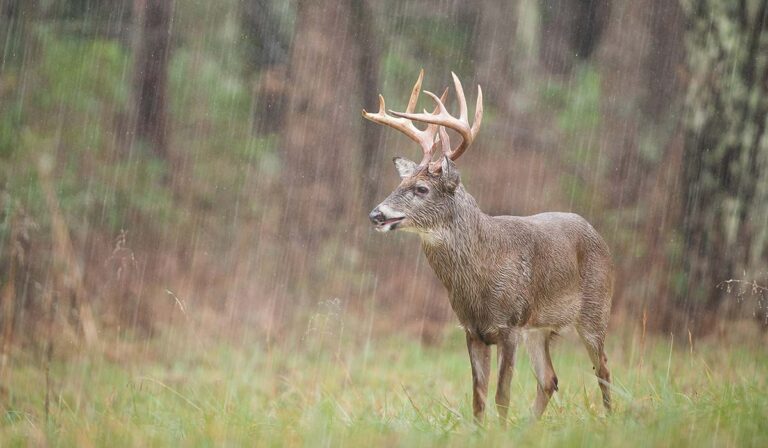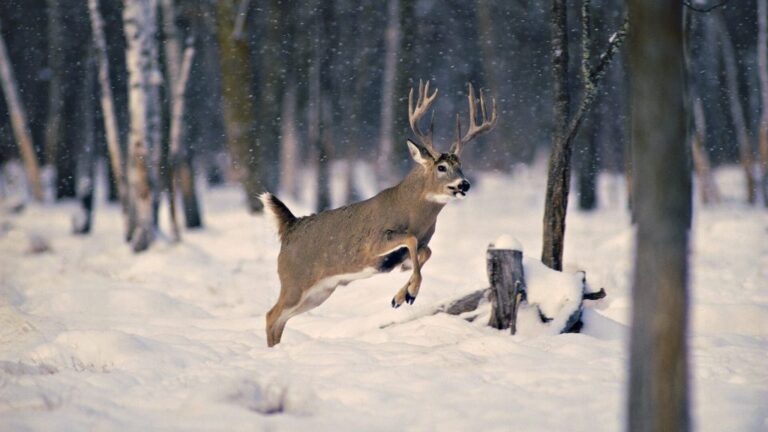How to Get Deer to Come Out During the Day
To entice deer to emerge during daylight, establish a reliable food source. Implement a feeding schedule that aligns with daytime hours.
Attracting deer to your property during the daytime can be a challenging yet rewarding endeavor for wildlife enthusiasts and hunters alike. Creating an environment that feels safe and provides the necessities for deer is key. By introducing consistent food sources such as feeders with corn or a food plot of clover, you encourage deer to visit during the day.
Deer are creatures of habit; once they associate your property with safety and food available at specific times, they are more likely to adjust their patterns. It’s crucial not only to provide sustenance but also to minimize disturbances that might deter deer from venturing out in daylight. This introduction to deer behavior offers insight into transforming nighttime visitors into daytime guests on your land.
Learn About Deer Patterns
If you’re interested in observing deer or enticing them to visit your area during daylight hours, it is essential to grasp their behavior patterns. Deer, like any wildlife, are creatures of habit whose activities are influenced by daily routines, seasonal cycles, and environmental conditions. Understanding these patterns will vastly improve your chances of seeing these majestic animals in the wild. Let’s dive into the daily habits of deer, how they change with the seasons, and what environmental factors affect their visibility.
Daily Habits Of Deer
Deer are primarily crepuscular, meaning they are most active during the twilight hours of dawn and dusk. Still, they do have a daytime presence. The key to spotting deer during daylight is to identify their feeding and bedding areas. Deer will often feed on nearby greenery in the early morning hours, then find a secluded place to rest. They’ll usually return to feed again before nightfall. To catch deer during the day:
- Monitor watering holes and food sources as deer frequently visit these places
- Look for trails and tracks that indicate regular travel paths and daytime shelters
- Set up a trail camera to confirm activity during the day
During the midday hours, when deer are less active, remain patient and attuned to subtle movements in the brush.
Seasonal Behavior
Seasonal shifts play a pivotal role in the daytime movement of deer. During the fall rut, or mating season, bucks are more likely to be seen during the day as they seek does. The cold weather of winter can also drive deer to forage more during warmer daylight hours. Here’s a brief outline of what drives deer behavior across the seasons:
| Season | Behavior |
|---|---|
| Spring | Regrowth of foliage; deer focus on recovering from winter |
| Summer | Deer find dense cover in forests and fields; less daylight activity due to heat |
| Fall | Mating season; bucks are more active and visible during the day |
| Winter | Deer forage for scarce food sources and may be more visible in search of sustenance |
To increase sightings in different seasons, align your observation times with these behavioral patterns.
Environmental Factors
Various environmental factors significantly influence when deer venture out. Changes in weather patterns, such as an approaching storm, can cause deer to alter their activity and feed at atypical times. Let’s consider some additional conditions:
- Hunting pressure can cause deer to adjust their routes and timing to avoid humans.
- Forest management practices, like controlled burns, impact deer movements and habitat preferences.
- Moon phases may affect deer activity, with brighter nights potentially reducing daytime sightings.
By staying cognizant of these factors and adjusting your strategy accordingly, you will increase your opportunity to observe deer in their natural habits during the day.

Credit: m.youtube.com
Food Sources For Deer
Deer are elusive creatures, particularly when it comes to their daytime movements. To encourage these majestic animals to venture out during daylight hours, understanding and providing optimal food sources is crucial. Hunters and wildlife enthusiasts alike can benefit from strategies that align with the natural feeding habits of deer. A well-planned approach to the deer’s diet not only promotes healthier herds but also increases the likelihood of spotting them when the sun is up.
Planting Food Plots
Cultivating a food plot is an effective way to create a reliable food source that can draw deer out into the open during daylight. Consider the following steps to create an attractive food plot:
- Select the right location: Choose an area that is secure and remote, yet accessible for deer during the day.
- Choose the right crops: Plant a mixture of annuals and perennials that are palatable to deer such as clover, alfalfa, brasiccas, and cereals.
- Maintain the plot: Ensure regular upkeep to keep the plot inviting and productive throughout the seasons.
Attracting With Minerals
Deer have a natural craving for minerals which are essential for their growth and health. Attract deer with a mineral site by doing the following:
- Locate a strategic spot: Set up near water sources or well-traveled deer paths.
- Provide a mix of minerals: Use a blend of salt, calcium, phosphorus, and other trace minerals.
- Monitor the site: Keep an eye on usage and replenish the minerals as needed to maintain a constant attraction.
Providing High-quality Forage
The cornerstone of attracting deer during the day is offering high-quality forage. This includes diverse vegetation that fulfills nutritional needs:
| Forage Type | Benefits |
|---|---|
| Natural browse | Rich in protein; includes leaves, twigs, and shoots from native vegetation. |
| Supplemental feed | Provides additional nutrients during times when natural food is scarce. |
Implementing these strategies not only entices deer to forage during daylight but also fosters a healthier deer population.
Using Deer Attractants
Transform your hunting experience by mastering the art of drawing deer to your area throughout the day with the strategic use of attractants. Moving beyond the dawn and dusk watch, uncover the secrets to encourage daytime deer activity, amplifying your chances for a successful encounter. Embrace proven attractants such as scents, calls, and the essential understanding of wind direction to enhance your hunting tactics.
Understanding Scents
The olfactory senses of a deer are incredibly sharp, making scents an effective tool to lure them into your target zone. Identifying and utilizing the right odor can mean the difference between a busy hunting ground and an empty one. Consider incorporating both curiosity scents and cover scents.
- Curiosity scents: These are designed to pique the interest of the deer, drawing them into the area as they seek the novel smell.
- Cover scents: These aim to mask human odors, ensuring that you blend seamlessly with the natural environment.
When using scents, apply them to nearby foliage or scent stations, and refresh the aroma frequently to maintain its potency throughout the day.
Proper Use Of Calls
Calls can emulate the natural sounds of deer, creating an illusion of safety and sociability that can be irresistible. The key to success with calls lies in timing and realism.
- Master the art of the grunt call, which mirrors the noise bucks make, to establish dominance or express interest in does.
- Employ the fawn bleat to tap into the protective instincts of does, particularly in the early seasons.
Remember, moderation is crucial. Overusing calls can spook deer or signal artificiality. Use them sparingly for the best effect.
Incorporating Wind Direction
Deer are highly sensitive to scent, making wind direction your silent partner in the strategic use of attractants. Position yourself downwind of where you expect the deer to appear, ensuring your scent doesn’t betray you. Use this to your advantage by placing scent attractants upwind, allowing the natural breeze to carry the aroma towards deer pathways.
An understanding of this often-overlooked aspect can elevate your hunting prowess. Regular observation and the use of wind direction tools can optimize your setup and significantly increase your chances of daytime deer encounters.
Choosing The Right Location
Enticing deer to make an appearance during daylight hours hinges on selecting the perfect locale. Smart stand placement, coupled with mastering the nuances of natural cover and line of sight, can transform your hunting expeditions. Let’s explore how to maximize these elements to create the ideal environment for daytime deer activity.
Selecting Stand PlacementSelecting Stand Placement
Finding the ultimate stand location requires a strategic blend of careful observation and an understanding of deer behavior. Position your stand downwind of known deer trails and feeding areas to stay undetected. Height is also a crucial factor; typically, 15 to 20 feet off the ground gives you a clear vantage point while keeping your scent above the deer’s nose.
- Observe winds patterns: Consistent winds can dictate the best placement for your stand.
- Accessibility: Ensure a quiet, undisturbed approach to your stand both for entering and exiting. Keep human activity to a minimum.
- Seasonal planning: Deer patterns change with the seasons. Adjust your stand location to align with these shifts.
Utilizing Natural Cover
Blending in is the name of the game when it comes to successful daytime deer encounters. Use the natural terrain and foliage to your advantage. Dense areas with heavy underbrush not only assist in camouflaging your presence but also offer tranquil spots for deer to rest in daylight hours. Position your stand near these areas, but maintain a clear line of sight to the target zones.
| Type of Cover | Advantages |
|---|---|
| Thick Bushes | Excellent for concealment |
| Tree Canopies | Helps disperses scent and provides shade |
| Terrain Folds | Natural blind spots that deer frequent |
Understanding Line Of Sight
Having the right line of sight is essential for monitoring deer movement and preparing for the shot. Clear any obstructive branches or foliage beforehand to ensure a line of sight that is both broad and unobtrusive. This will help you spot deer from afar and prepare for their approach without alerting them. Maintain minimal movement and be ready to capitalize on the moment a deer enters your field of vision.
- Elevated stands: Offer a better line of sight and decrease chances of being directly in a deer’s line of sight.
- Ground blinds: Should have strategic shooting lanes cut out for clear, concise aiming.
- Stealthy surveillance: Use optics to scout from a distance, minimizing motion at your stand.
Maximizing Daylight Opportunities
The quest for observing deer activity during daylight hours is akin to discovering a hidden wildlife spectacle. Maximizing Daylight Opportunities is fundamental for wildlife enthusiasts, photographers, and hunters alike. The key is to comprehend deer behavior, utilize natural light effectively, and optimize your viewing strategies. Let’s delve into how you can enhance your chances of witnessing these majestic creatures under the sun’s watchful eye.
Timing For Daytime Activity
Deer, primarily crepuscular creatures, exhibit heightened activity during dawn and dusk. Nonetheless, certain factors encourage their movement during daytime. Understanding these can drastically improve sighting possibilities. The rutting season, for example, fuels bucks’ daytime activity as they search for mates. Similarly, patterns in feeding habits due to seasonal changes can coax deer out. Track weather patterns, barometric pressure changes, and moon phases as these also influence deer behavior.
- Monitor weather reports – Deer tend to move more during certain weather conditions.
- Keep tabs on moon phases – Specific phases can spur daytime activity.
- Understand seasonal behaviors – Feeding patterns change with the seasons, influencing when deer emerge.
Utilizing Sun Angle
Strategic use of the sun angle is pivotal. Deer often seek warmth when temperatures are cool, which is usually in sunny spots during the morning hours. Conversely, they’ll look for shade when it’s hot. Scout locations with ideal sun exposure. East-facing slopes get morning sunlight, which might be preferred by deer after a cold night. During warmer days, focus on shaded areas where deer retreat to escape the heat. Understanding these patterns allows you to be in the right place at the right time.
- Identify east-facing slopes for morning observations.
- Search for shaded areas as afternoon retreats during hot days.
- Adjust your schedule according to the anticipated deer behavior linked to sun angle.
Optimizing Viewing Opportunities
For optimal deer sightings, your approach and location matter significantly. Equip yourself with binoculars or a spotting scope to observe from a distance without disturbing them. Set up near water sources, food plots, or natural travel corridors, as deer frequent these areas. Employ camouflage gear to blend into natural surroundings, minimizing your chances of being detected. Quietness and patience are your allies. Remain still and silent to avoid spooking deer, ensuring prolonged viewing opportunities.
| Tactic | Description | Benefit |
|---|---|---|
| Long-range optics | Use binoculars or spotting scopes | Sight deer without intrusion |
| Strategic positioning | Set up in high-frequency deer areas | Maximize sighting chances |
| Concealment | Employ camouflage and minimize movement | Remain unnoticed by deer |
Frequently Asked Questions On How To Get Deer To Come Out During The Day
What Attracts Deer During Daylight?
Deer are drawn to areas with plentiful food sources, water, and cover. Planting food plots with clover, alfalfa, or chicory can entice deer to come out during daylight. Ensure a nearby water source and minimal human presence to increase your chances of daytime sightings.
How Can I See More Deer In Daytime?
Minimize human activity in the area to avoid spooking deer. Establish a routine of quiet observation during early morning or late afternoon hours. Deer are crepuscular, meaning they’re most active at dawn and dusk, so these times may yield the best results for daytime sightings.
What Times Are Deer Most Active?
Deer are crepuscular animals, most active around dawn and dusk hours. Although seeing them during broad daylight is less common, they are sometimes active on overcast days or in areas with little to no human disturbance during midday.
Can Weather Influence Deer Movement?
Yes, weather plays a key role in deer movement. Rainy or overcast conditions can increase daytime deer activity. Deer may also be more active during cooler parts of the day. Monitoring weather patterns can help predict when deer are more likely to be out and about.
Conclusion
Attracting deer during daylight isn’t just a stroke of luck; it’s a strategic process. With the right blend of habitat management and understanding deer behavior, your chances increase significantly. Remember, patience and consistency are key. Implement these tips, and you’ll soon enjoy the sight of deer casually grazing in broad daylight.
Happy watching!




